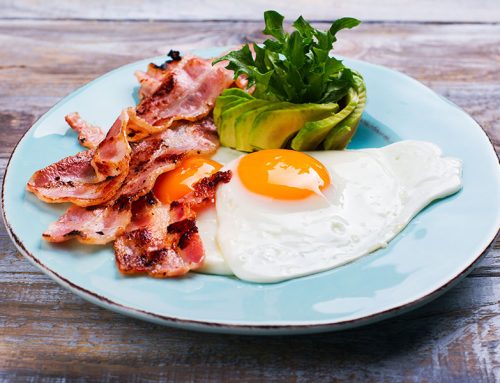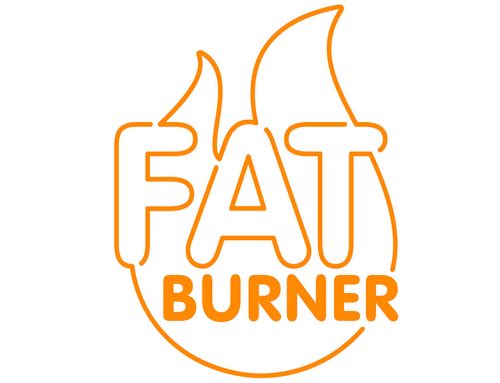At our members-only community site, Burn the Fat Inner Circle, we have an ongoing (and somewhat satirical) forum discussion going on called, “The complain about the price of food thread.” We started it in November 2022, as inflation was raging.
Months later, the price of food is still out of control, and that thread has been bumped repeatedly and scrolls on for pages. I figured we needed to balance that complaining commentary with a more positive and instructive dialogue about how to save money on food, especially healthy food. So, we opened a new forum thread called “How to save money on healthy food.”

I also recently did two separate surveys on Facebook – one on the Burn the Fat fan page and one in the Burn the Fat Facebook group – asking this question:
How are YOU saving money on healthy food right now?”
We got even more answers there (crowdsourcing on facebook is a great way to get ideas, and our Burn the Fat group is very engaged… Join the Burn the Fat Facebook Group Here)
My goal from the start was to take all these forum discussions and surveys and put the answers together in one place, edited or paraphrased for quick reading, and then share them with everyone in the Burn the Fat, Feed the Muscle community.
That’s what today’s post is. This blog is a curated list of the best ideas and solutions for saving money on food from real people – our readers, members, and social media followers.
We’re not talking about saving nickels and dimes here, we’re talking about saving dollars, and potentially a lot of them. Here’s an example:
Earlier this week I went food shopping with a goal of seeing how much I could save in one trip. My total (gross) bill was $175.00. After I applied the coupon strategy, my bill was down to $163. That’s $12 saved. I paid the tab with a credit card that had rotating rewards every quarter. The reward at the time was 5% cash back or 5X points on groceries. That was another $8.15 saved for a total of $20.15. I used the store or generic brand strategy (not buying name brands) and I estimated I saved about another $15 there. That’s a total of $35.15 saved. As I said, that’s not penny pinching. That’s like a free tub of protein powder!
As you can see from my recent shopping trip, when you combine strategies, it can really add up. I’m not sure which strategies on the list below will apply to you. Not everyone is going to grow their food in their own garden or raise their own chickens, but I’m certain you’ll get a lot of ideas that do apply to you as you read this list below.
This list is a combination of the answers our readers and followers shared along with some of the strategies I use myself. I’m posting the reader replies word for word as they shared them on our members site and on Facebook. There might be some repetition in this list, because I copied and pasted everyone’s responses and some of them were similar, but they might be the same idea with a slightly different perspective. I hope you find this helpful and save a lot of money!
Ways to Save Money On Healthy Food:
When chicken and beef at our local store gets to the “must sell by” date, there is huge sale. I got a flank steak originally priced at $22 for only $13. There were four of them with no limit per customer, so I bought all of them. Three went in the freezer, and one went right on the grill.
I buy mostly frozen vegetables, (huge difference in price on fresh vs. frozen spinach, broccoli, etc.)
I eat a lot of beans and lentils for my starchy carbs because they’re cheap. I also cook in large batches and freeze what I won’t eat within a few days. You can especially get good deals buying bulk packages. Compare prices by the kilogram versus the small packages.
We always make a list of what we need first, and then we use the Flipp app to find the high-ticket items (eggs, peanut butter, etc.) at the cheapest price. We also buy meat in bulk when it’s on sale.
Buying groceries in bulk at warehouse stores like Costco, BJ’s or Sam’s Club can save you a lot of money over the long term, even though they have an annual fee of $50 or $60. There are big discounts per unit at these stores on a regular basis when you buy certain items in large quantities.
I shop at Aldi. They have good prices on good produce, and they have regular sales. I also find chicken breast and frozen fish there at reasonable prices and they’re often on sale.
Sometimes Amazon Fresh has bargains.
I usually go to Whole Foods or Wegmans for fish, but catching fish on my own is so much more fun when the season is right.
Stop buying supplements (except protein powder and creatine). Spend the money you save on supplements to get the quality food you want. Drink coffee for your “pre workout supplement.”
Stop drinking Starbucks coffee. There are other brands that are half the price. And buy it in bulk. And brew it at home. Three or four bucks for a cup of coffee at the store is ridiculous. Do the math on that over a period of years.
Instead of buying individually sized cottage cheese and yogurt containers, I buy them in the larger size and get a discount.
I bought a smokeless grill so I could cook healthy at home! It’s convenient and keeps me from spending a lot of money on restaurant food. (I love the recipes at Burn the Fat Inner Circle for home cooking, keep them coming Tom!)
I buy some things in bulk, but not everything because too many times, food ends up in the garbage. On the other hand, if it can be frozen and kept in the freezer for months or if it’s non-perishable (has a long shelf life), I buy it in bulk when I get a discount for doing so.
Don’t buy organic. All these nutrition gurus who try to guilt you or scare you and say you must eat organic… ignore them. It’s too expensive and not worth it, especially these days.
The cheapest vegetables can be from carts or mom and pop stores which are plentiful in New York City where I live. Often, they have ethnic foods too. We have Indian, Greek, Tibetan, Chinese, Peruvian, Uruguayan, and Ecuadorian stores that have good prices. Last week I got 3 bell peppers for $1. Meat is more difficult, but Fresh Direct has better quality ground meat locally sourced and cheaper than the neighborhood stores.
I buy meat when it’s discounted close to the expiration date. At our local Metro Market, they will discount with a day or two left and either cook right away or freeze for later. I’ve purchased 99% lean ground turkey regularly $6.99/pound for only $2.99/pound and will buy at least 3 or 4 and thrown them in the freezer. That’s more upfront cost, but it saves money in the long run.
I go to the regular grocery store for most of my beef, and I stalk the meat man as he is relabeling the packages for sales or marking them down because they’re near expiration.
The store I shop at also has a rewards program where you get credits toward discounted gas, so even if I don’t save money on the food, I still save some money elsewhere.
I go to Costco and buy foods in bulk when the prices are lower for the larger quantities. I get good deals on frozen veggies, frozen salmon, and frozen shrimp. I also buy large quantities of yogurt at a discount (compared to the small individual serving sizes), which I eat every day.
I buy the $4.99 rotisserie chicken at Costco. It’s cheap because it’s loss leader for them. It gets people into the store, where many people spend more. I just run in, grab the chicken, and run out, or else I’m likely to buy a bunch of stuff I didn’t intend to, LOL.
At Costco, ask the butcher for a 10-pound sleeve of extra/lean ground beef. Much more savings when you buy that much at once.
Finish all the leftovers! Do not let any food go to waste. Whatever random veggies are left in your refrigerator, use them in stir frys, scrambled eggs / omelets, or salads.
Every week I buy fresh veggies at Walmart, which I eat as snacks every day. The fresh veggies are cheaper at Wal Mart than elsewhere.
I buy frozen veggies instead of fresh, it’s a lot cheaper, and it is fresh because it’s frozen when it’s fresh.
Don’t buy name brands, buy the store (“generic”) brand. Wal Mart charges less than a dollar for 12 ounces of their Great Value brand of frozen broccoli. Bird’s eye frozen broccoli is $2.53 for 10.8 ounces. That’s a HUGE difference! At Wal Mart, Lea & Perrins Worcestershire sauce is $5.16 for 15 ounces (.34 an ounce) Wal Mart’s Great Value brand is $1.00 for 10 oz (.10 an ounce). The name brand costs triple. Kikkoman low sodium soy sauce is $3.58 for 15 ounces. The Wal Mart brand is $1.58 for 15 ounces. It’s the same sauce!
Buy in bulk when discounts are offered for larger sizes. Buy in bulk when regular package sizes are on sale.
Never shop without a list and be militant about always sticking to your list, except when you see unexpected sales. Then, stock up on any foods that are non-perishable or that you can freeze.
Don’t shop on an empty stomach – you might be tempted to purchase foods you’re craving, even though they’re not on your list.
Shop once a week and buy larger quantities rather than shopping two or more times a week. You’ll save on gas. (And you’ll save time, and time is money).
Use credit cards with the highest cash back or reward points. Some cards have 2% cash back / 2X points all the time, and other cards have quarterly rotating rewards where one quarter a year you get 5%/5X rewards.
I forgot about points that were accumulating on one of my credit cards for years. When I realized it, I redeemed some of them for a Wal mart gift card and did my food shopping there instead of my usual grocery store. I got $150 of groceries for “free.” I have to say, it felt quite nice getting “free” food. Now for the first time, I’m paying attention to the rewards programs that various cards offer. PS. Be sure to pay the card in full each month or the interest charge will cancel out your savings!
Use online coupons. Some stores let you “clip” coupons in the app.
Clip newspaper coupons.
Buy vegetables and fruits in their natural state. For example, buying a head of broccoli is cheaper than buying pre cut florets. Buying a whole cantaloupe is cheaper than buying it already cut / cubed.
This is not for everyone, but if you have green thumbs and have some land, then you can put in a garden. I love having an herb garden. There is something satisfying about straight from the garden to your kitchen. If you don’t have a lot of land, you can still grow greens in the kitchen in pots or hydroponics.
Keeping a garden is not every one’s cup of tea. There is a lot of planning and work involved. It is well worth it though.
I’m raising chickens. We get about 3 dozen eggs a week.
We’ve made friends with our neighbors that have chickens. We buy eggs from them and sometimes even exchange the eggs for items I make (they all love my homemade hummus and guacamole).
We’ve started giving more kitchen scraps to our (pet) chickens, and that helps save a little on the cost of chicken food and cuts down on our food waste at the same time.
Extra large eggs are $5.50 at Wal Mart right now. I buy eggs from local farms at $3.50 to $4.00 a dozen.
We grow our own veggies, raise chooks for eggs and buy meat from local butcher.
We buy a grass-fed cow by the quarter. We have an extra freezer in the basement, so plenty of space. Buying in that amount works out very cheaply compared with usual butcher prices!
We live in a fairly rural area, and lots of people around here raise animals. We’ll often have a friend or neighbor ask if we want to go in on a half or a quarter of a cow. (A half a cow is a lot* of meat!) You definitely get a better price overall on meat buying it that way, but you do have to have a lot of freezer storage space.
If you participate in the sale before the butchering, you can also have it packaged in weights you like (we’re a family of 6, so we prefer hamburger to be packaged in 1-1/2 pound parcels, for example,) and you can have any cuts you don’t like made into hamburger.
Our local church runs a veggie co-op. For $12 you get 8 kilograms worth of vegetables and fruit. You don’t get to choose the produce, they order directly with the growers. It’s a great service, I have used them before and impressed with their commitment, I also did volunteer work for them.
I’m on a really tight budget and I get food from the local foodbank when I can.
Every week there is a coupon section for three different grocery stores in the area.
There are discount coupons in my local paper, buy one get 1 free offers and sale notifications.
When I see any items that I use regularly, I go in and stock up on them if they can be frozen or have a long shelf life (canned goods, pasta, rice, oats, etc)
Learn to cook instead of eating out. Restaurant food is expensive, and so are cafes and coffee shops. Home cooking always tastes better and can be much healthier because you control the ingredients. Save eating out for special occasions.
Conclusion
I hope you found this list useful. You might want to bookmark this page or print it out. And feel free to share.
Let me wrap this with story about expensive eggs…
Egg whites vs whole eggs (why do bodybuilders only eat the whites?)
For years, I used to keep 1 or 2 whole eggs when I was making a scramble or using eggs for various recipes, and I’d throw the rest of the yolks out (using mostly egg whites). I did that to help hit the exact macro ratio I wanted (more protein, less calories). I did that for years. Decades, even.
It was only when this wave of inflation hit, and in particular, the egg prices went through the roof, that I stopped throwing out yolks. As was mentioned in the list above, the thought of wasting food when food prices are where they’ve been lately is too hard to stomach.
So today I still use only 1 or 2 whole eggs (with the yolk) per recipe, then I get the egg whites from the carton (and not name brands like Egg Beaters. I save even more money by buying the store or generic brand… and I watch for sales… and I use my rewards credit card, and… no… I don’t have chickens.)






Growing your own food saves a lot. It doesn’t have to take a ton of time or work either. Use automatic drip watering systems, and mulching so you don’t have to weed often. Or grow in raised beds. Get a hydroponic system set up for really low time input.
Do a trade: if you have some yard but don’t want to grow, you can probably find someone who wants to grow but doesn’t have yard. Let them garden in exchange for veggies.